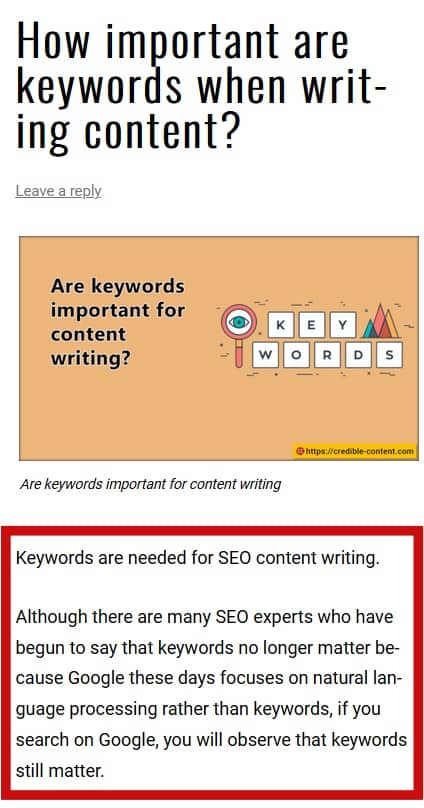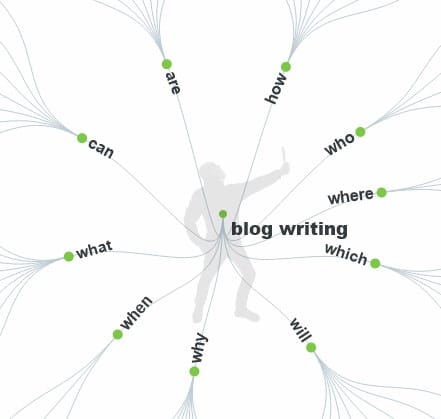Just imagine: you have written a great blog post and it can help thousands of your readers.
But your introduction fails to capture the imagination of your readers and after reading the introductory sentences, your readers move on, missing on a great opportunity to learn what you have captured in your blog post.
When you visit some blogs you come across a very strong introduction.
The introduction is the first couple of sentences that are supposed to hook you and make you read the rest of the blog post.
Your opening sentences or your single opening sentence is the introduction of your blog post.
After your blog post main headline, it is the introduction that sells the idea of your blog post to your readers.
If your introduction fails to impress them, there is little chance they are going to read the rest of the blog post.
The 4 main ingredients of a blog post introduction are
- Grab the reader’s attention.
- Introduce the main points or the main proposition.
- Convey what to expect from the blog post.
- Address the concerns of the readers who are about to read the blog post.
In a blog post on the same topic (writing compelling intros for your blog posts) Brian Clark mentions copywriter Eugene Schwartz: he often spent an entire week on the first 50 words of his sales copy.
The headline and the opening paragraph.
Of course, as a professional content writer or copywriter it might be impractical for you to spend that much time on an introduction, but the moot point is, take your introduction seriously.
Whether your blog post is going to be read or not depends a lot on your introduction.
Again, what’s introduction?
Your blog post introduction is the first sentence or the first couple of sentences that draw people to your entire blog post.
Is your blog post introduction same as meta description?
Meta description is different.
Although, in terms of traffic from search engines, your meta description is as important as your blog post description.
Just as people read your introduction and then decide if you want to read the remaining blog post, the meta description appears in your search engine listings.
Your title along with the meta description compels people to click your link on search results and visit your website or blog.
The meta description appears in the source code of your blog post.
It is not visible when people visit your blog post.
People can only see your meta description either in search results, or if they view the source code of your blog post.
They can also see the meta description when you post your link on one of the social networking websites because this information is automatically extracted from your URL.
The blog post introduction on the other hand is the first sentence or the first paragraph.
It is a text that appears just beneath your headline.
In the screenshot below, the highlighted portion is the introduction of one of my blog posts.
Writing an effective blog post introduction that makes people read your entire blog post
Here are a few formats you can follow when writing an intro to your blog post.
Ask a question in the introduction
- Want to write a great blog post introduction that your readers won’t be able to resist?
- Want to write a sensational blog post introduction?
- We want to learn how to write an irresistible blog post introduction?
These are a few examples of asking questions in the beginning of a blog post.
When people are reading your blog posts, they rarely answer a “no” to such a question.
For example, if you have been drawn to this blog post, you obviously want to write killer blog post introductions.
You want to learn how to write highly successful intros.
So, if I ask such a question in the beginning, there is a 99% chance you are going to say “yes” unless you are unsure of what you are trying to achieve here.
State a problem in the blog post introduction
- Not many people are reading your blog posts? The problem might be in your introduction.
- You might be losing a ton of readers because you’re not paying much attention to your blog post intro.
- Just because not many people are reading your blog post, your search engine rankings might be tanking because they’re both related to each other.
In the intros mentioned above, I have stated some problems and you certainly want to find their solutions.
Most of the people who come to consume your content have problems to solve.
When in the into itself you mention the problem, it immediately gets the attention of your readers.
Their anticipation increases.
They expect to get answers from your blog post.
Start with a story narrative
Everybody loves to read a story.
Especially when people can relate to the story.
Here is a small example:
Peter had started his business with great anticipation.
He had built an awesome mobile app that enables people to publish microblog posts from mobile phone.
But nobody seems to want to download the mobile app?
In 6 months, only 30 people downloaded the mobile app and among them, 20 uninstalled it.
It has been a heartbreaking experience for Peter.
Then he realized something that would change the course of his entire marketing.
Soon, thousands of people would download his mobile app within a month.
Want to know how?
Read on.
You definitely want to read what happened next.
This is the story format of writing an introduction for your blog post.
Use statistics and numbers in your blog post introduction
- WordPress users post around 70 million blog posts every month.
- 71% WordPress blog posts are written in English.
- There were 31.7 million bloggers in the United States in 2020.
- A professional blogger spends on an average 6 hours on each post.
People love new data.
The data should be relevant and useful.
For example, the above-mentioned data would be relevant to a blog post promoting the advantages of blogging.
In the introduction itself they have learned something valuable.
Begin your blog post with a controversial statement
- SEO might not be right for your business.
- I love firing my clients.
- I don’t care much about lead generation.
These can be controversial statements because almost everyone wants to improve his or her search engine rankings, and people obviously want new leads.
Hence, people would like to read why you are making such controversial statements.
Somewhere in their minds, they know that you are being ironic and within the blog post, you are going to prove yourself wrong.
Aside from these, you can use your introduction to take a stand.
You can use a quotation from a famous personality or a historic figure.
Many writers suggest that you should write your blog post introduction after writing the complete blog post.
By the time you have completed your blog post, you have a clear understanding of what your blog post represents and what it delivers.
You can sum up the essence of your blog post in the introduction.
You can create curiosity.
You can create controversy.
Whatever catches your fancy.
Otherwise, it depends on you whether you want to write the intro first or after you have written your blog post.






